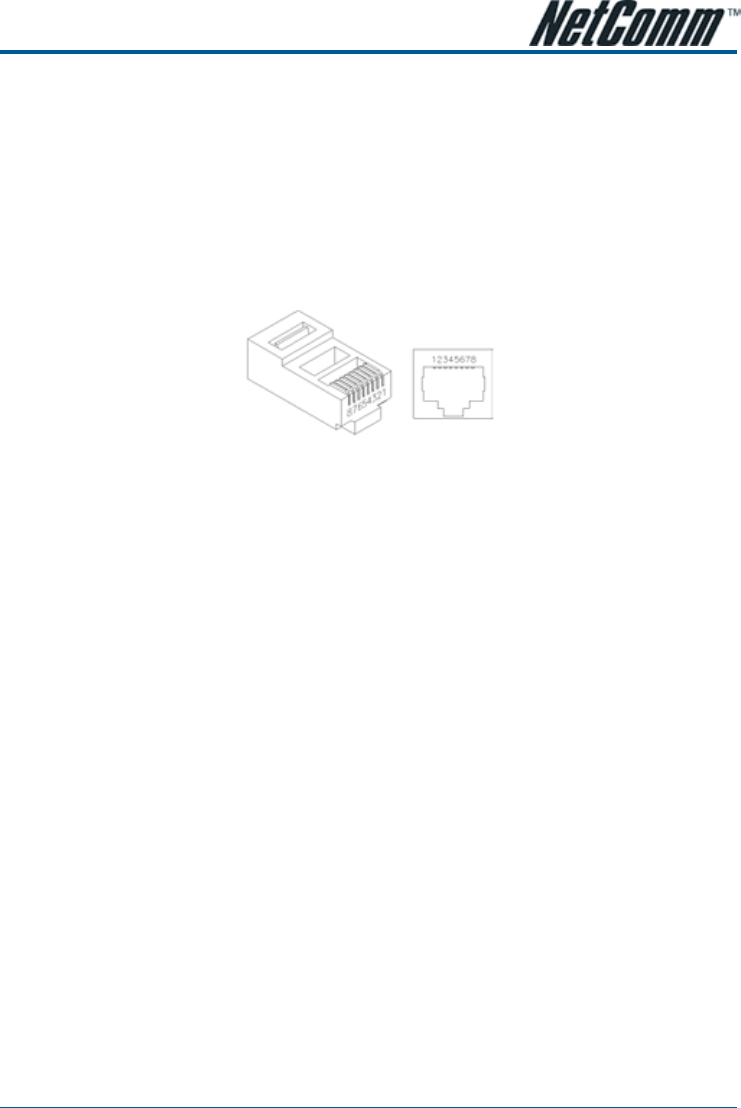
YML857 Rev1 HS960 Wireless Gateway User Guide
www.netcomm.com.au 117
APPENDIX A SIGNAL CONNECTION ARRANGEMENTS
RJ-45 Ethernet Port
The HS960 RJ-45 Ethernet port can connect to any networking devices that use a standard LAN interface,
such as a Hub/Switch Hub or Router. Use unshielded twisted-pair (UTP) or shield twisted-pair (STP) cable to
connect the networking device to the RJ-45 Ethernet port.
Depending on the type of connection, 10Mbps or 100Mbps, use the following Ethernet cable, as prescribed.
10Mbps: Use EIA/TIA-568-100-Category 3, 4 or 5 cable.
100Mbps: Use EIA/TIA-568-100-Category 5 cable.
Figure A-1 RJ-45 Connector and Cable Pins
Note: To prevent loss of signal, make sure that the length of any twisted-pair connection does not exceed 100 meters.
APPENDIX B REGULATIONS/EMI COMPLIANCE
FCC Regulatory Statement
Part 15-Class B compliant device
This device complies with Part 15 of the FCC Rules. Operation is subject to the following conditions:
1 This device may not cause harmful interference, and
2 This device must accept any interference received, including that which may cause undesired operation.
This equipment has been test and found to comply with the limits for a computing device, pursuant to Part
15 of the FCC Rules. These limits are designed to provide reasonable protection against harmful interference
when the equipment is operated in a commercial environment. This equipment generates, uses, and can
radiate radio frequency energy and, if not installed and used in accordance with the instructions, may cause
harmful interference to radio communications. However, there is no guarantee that interference will not occur
in a particular installation. If this equipment does cause harmful interference to radio or television reception,
which can be determined by turning the equipment off and on, the user is encouraged to try to correct the
interference by one or more of the following measures:
1 Reorient or relocate the receiving antenna.
2 Increase the separation between the equipment and receiver.
3 The equipment and the receiver should be connected the outlets on separate circuits.
4 Consult the dealer or an experienced radio/television technician for help.
Changes or modification not expressly approved be the party responsible for compliance could void the user’s
authority to operate the equipment.


















